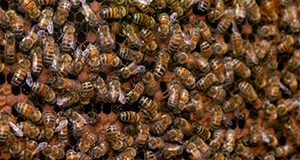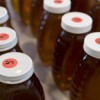Feral colonies of honey bees nesting near humans or domestic animals can pose a stinging threat and may be considered a nuisance and possibly a threat to animal or public health, and therefore bees often need to be removed or eradicated when they are found nesting near homes or other property. This 14-page guide written by Mary Bammer, Jamie Ellis, Eric Baxter, Krista Butler, John Coldwell, B. Keith Councell, Kevin Easton, Brendhan Horne, Brandi Stanford, and Amy T. Vu and published by the UF/IFAS Entomology and Nematology Department details best management practices for live bee removals and serves as a reference for beekeepers who choose to perform live bee removal services in Florida.
https://edis.ifas.ufl.edu/in1297
Tag: Mary Bammer
Bottling, Labeling, and Selling Honey in Florida
Honey producers in Florida have two main avenues for selling their hive products. Larger operations must be properly permitted by the Florida Department of Agriculture and Consumer Services and must bottle honey in a certified food establishment. Smaller-scale honey producers, however, may be exempt from needing these licenses, under Florida’s cottage food laws. This 4-page fact sheet written by Nancy Gentry, James D. Ellis, and Mary Bammer and published by the UF/IFAS Entomology and Nematology Department discusses the laws regarding bottling, labeling, and selling honey in Florida both under and outside of the cottage food laws.
http://edis.ifas.ufl.edu/in918
Keeping Bees in Florida
As of June 2016, there are over 4,000 registered beekeepers in the state of Florida and 440,000 managed colonies. According to the USDA, 2012 Florida beekeepers produced over 11 million pounds of honey. The average winter colony loss in Florida as reported by the Bee Informed Partnership Management Survey was the third lowest rate across the nation with only Hawaii and Texas reporting lower colony losses in that time period. This 4-page fact sheet written by Tomas A. Bustamante, Jamie D. Ellis, and Mary Bammer and published by the UF Department of Entomology and Nematology gives an overview of what makes Florida a unique state in which to keep honey bees. It explains the ins and outs of beekeeping in Florida, with descriptions of some of the hazards, a few of the important nectar-producing plants, special considerations for seasonal colony growth and management, and Florida beekeeping regulations.
http://edis.ifas.ufl.edu/aa264


